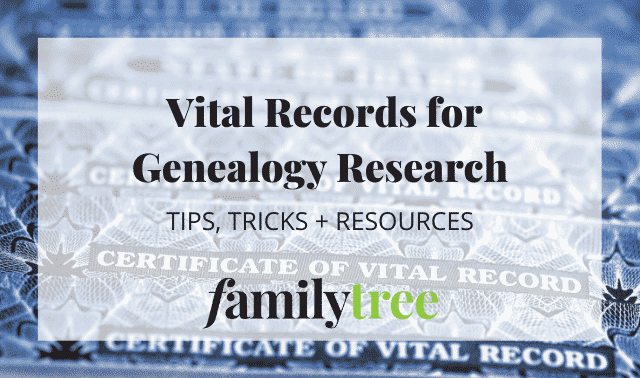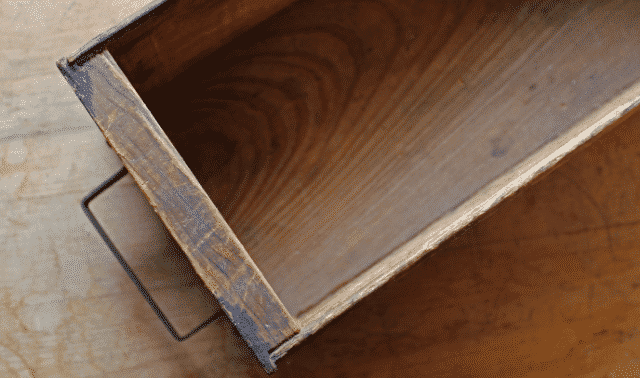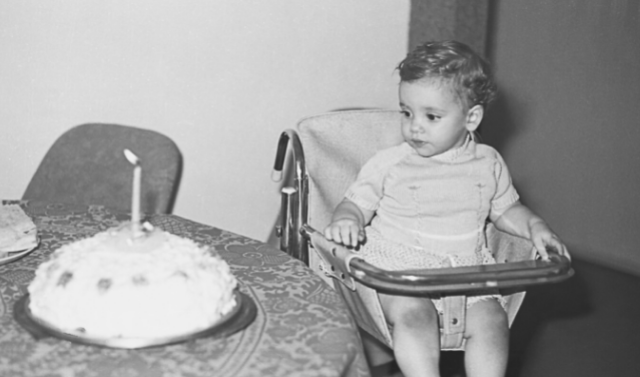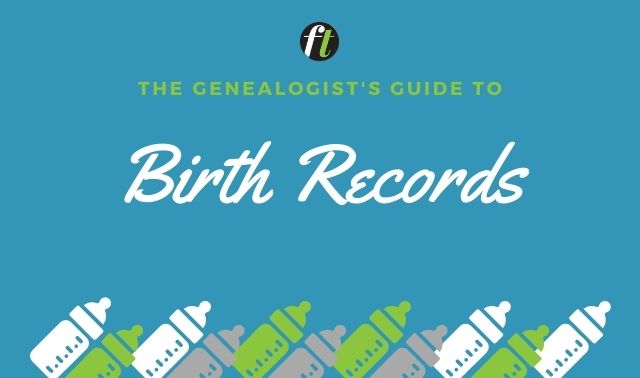Sign up for the Family Tree Newsletter! Plus, you’ll receive our 10 Essential Genealogy Research Forms PDF as a special thank you.
Get Your Free Genealogy Forms
"*" indicates required fields

Don’t limit your search for online birth, marriage and death details to America’s borders — you can find foreign vital records on the web, too.
You need to know two things first: In most European countries, government-administered vital records are called civil registrations. And you’ll need to turn to church records for many ancestral births, marriages and deaths.
Begin at FamilySearch, whose International Genealogical Index (IGI) and indexes to Scandinavian and Mexican vital records list millions of births and marriages from around the world. The site’s country-specific Research Outlines (click on Research Helps) offer instructions for obtaining international vital records, including those available on microfilm through the Family History Library and its branch Family History Centers.
Two Canadian provincial archives — British Columbia‘s and New Brunswick‘s — have posted vital-records indexes going back as far as 1800. England and Wales began registering births, marriages and deaths in 1837; for a small fee, you can search the indexes at FindMyPast.com (1837 to 2002) and Familyrelatives.org (1866 to 2002). If you’re lucky, you’ll find your relative’s name in Free BMD, a gratis, volunteer-compiled index to those records (1837 to 1911). And if your ancestry extends to the Netherlands, visit GenLias for free transcribed Dutch vital records back to 1811. To find more foreign vital stats online — as well as advice for accessing offline records — follow the links at Vitalrec.com and within the Births & Baptisms, Marriages and Death Records categories at Cyndi’s List.
If documents from the country where your relative was born, married or died aren’t yet online or available through the Family History Library, contact the country’s embassy or a consulate in the United States. You’ll find addresses and telephone numbers for these offices in the US State Department’s Foreign Consular Offices in the United States.
A version of this article appeared in the June 2005 issue of Family Tree Magazine.
Finding International Birth Records Online
Britain
Foreign birth records vary from country to country, much as US records do from state to state. British records are among the most easily accessible, thanks to a proliferation of Web sites providing indexes to civil registrations of births, which began in 1837. As the name implies, FreeBMD is the leading site for free transcriptions. Subscription and pay-per-view sites include 1837online.com and FamilyRelatives.org.
Scotland
Scotland adopted a similar system in 1855; the subscription site Scotlands People has civil registrations and earlier parish records. The free Scots Origins and FamilySearch International Genealogical Index catalog most Scottish births from 1855 to 1875. Ireland didn’t start birth registration until 1864, and the records aren’t widely digitized, but they’re available on FHL microfilm-as are most such British Isles records—along with indexes.
Scandinavia
Until recently, Scandinavian countries’ state Lutheran churches kept official birth records; they’re quite complete and available on FHL microfilm. The National Archives of Norway is digitizing parish registers and posting them online for free. The Danish State Archives is undertaking a similarly massive, gratis digitization project that will encompass all pre-1893 church records. The Genealogical Society of Finland‘s HisKi Project also aims to make church records free on the Web. Swedish records are almost entirely digitized—you can purchase subscriptions to access images on Genline and the Swedish National Archives’ less-extensive site, SVAR. The free Vital Records Index at FamilySearch contains birth information extracted from church records in Norway, Sweden and Denmark.
Germany
Parts of Germany began recording vital events in 1792; civil registration went nationwide in 1876 or so (following its 1871 unification). Although they vary by region, German birth records often include not only basic details, but also parentage information such as the mother’s maiden name. Annual and decennial indexes, which don’t exist for all years, can help you locate an ancestor’s record. The Family History Library (FHL) has microfilmed civil registrations for many towns up to about 1876, but these can be spotty. For non-microfilmed records, you must contact a civil registration office or archive in Germany. Look to churches for birth records predating civil registration-originals are at individual parishes; the FHL has microfilmed German archives’ duplicates. See the October 2004 Family Tree Magazine for research resources.
Italy
Italian researchers can thank the invading Napoleon for that country’s 1809 start of civil registration. Sicily soon followed in 1820. Although many northern Italian areas stopped keeping records after Napoleon’s 1815 fall from power, records continued in the south until civil registration became national law in 1866. The FHL has microfilmed many Italian birth records, but for those prior to 1809, you’ll need to turn to church records.
France
French civil registers, which are essential to family research there, begin in 1792. FHL microfilm coverage varies by region and some records have been destroyed-notably, almost all those from Paris dating before 1860 were lost to an 1871 fire. But when they’re available, you’ll find them indexed and thorough.
As in the rest of Europe, churches kept most birth records in Eastern Europe until the late 19th or early 20th century. Due to invasions and wars, availability and access vary—but the FHL has microfilmed many parish registers from Hungary, Poland, Slovakia and Croatia; it’s hit-or-miss for other countries.
Spain
Most Latin countries relied on the Catholic Church to keep birth records until the later 19th century. Spain began civil registration about 1870. Portugal started voluntary civil registration for non-Catholics as early as 1832, though official records don’t really start until 1878.
Latin America
In Latin America, record-keeping largely picked up the pattern the church established, with the government taking over as early as 1857 in Mexico and as late as 1940 in Bolivia. Most Latin American birth records exist at the local level in court or municipal offices, the Civil Registry office or (in Brazil) municipal archives. The FHL has extracted some Mexican birth records for its Vital Records Index at FamilySearch.
Canada
In Canada, local officials and churches (especially in French Canada) may have recorded births, provincewide vital records didn’t begin until the latter 19th century. The FHL has microfilmed many of these records, but they’re incomplete. Holdings include New Brunswick (1888 to 1899), Nova Scotia (1864 to 1877, with indexes) and Ontario (1869 to 1901, with indexes). For birth records dating from the 1900s, consult the province’s vital-records office. Most modern records are restricted for privacy reasons.
Written by David Fryxell








